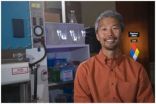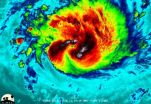(Press-News.org)
Working with patients with electrodes implanted in their brains, researchers at the University of California, Davis, and The University of Texas Health Science Center at Houston (UTHealth) have shown for the first time that areas of the brain work together at the same time to recall memories. The unique approach promises new insights into how we remember details of time and place.
"Previous work has focused on one region of the brain at a time," said Arne Ekstrom, assistant professor at the UC Davis Center for Neuroscience. "Our results show that memory recall involves simultaneous activity across brain regions." Ekstrom is senior author of a paper describing the work published Jan. 27 in the journal Nature Neuroscience.
Ekstrom and UC Davis graduate student Andrew Watrous worked with patients being treated for a severe seizure condition by neurosurgeon Dr. Nitin Tandon and his UTHealth colleagues.
To pinpoint the origin of the seizures in these patients, Tandon and his team place electrodes on the patient's brain inside the skull. The electrodes remain in place for one to two weeks for monitoring.
Six such patients volunteered for Ekstrom and Watrous' study while the electrodes were in place. Using a laptop computer, the patients learned to navigate a route through a virtual streetscape, picking up passengers and taking them to specific places. Later, they were asked to recall the routes from memory.
Correct memory recall was associated with increased activity across multiple connected brain regions at the same time, Ekstrom said, rather than activity in one region followed by another.
However, the analysis did show that the medial temporal lobe is an important hub of the memory network, confirming earlier studies, he said.
Intriguingly, memories of time and of place were associated with different frequencies of brain activity across the network. For example, recalling, "What shop is next to the donut shop?" set off a different frequency of activity from recalling "Where was I at 11 a.m.?"
Using different frequencies could explain how the brain codes and recalls elements of past events such as time and location at the same time, Ekstrom said.
"Just as cell phones and wireless devices work at different radio frequencies for different information, the brain resonates at different frequencies for spatial and temporal information," he said.
The researchers hope to explore further how the brain codes information in future work.
The neuroscientists analyzed their results with graph theory, a new technique that is being used for studying networks, ranging from social media connections to airline schedules.
"Previously, we didn't have enough data from different brain regions to use graph theory. This combination of multiple readings during memory retrieval and graph theory is unique," Ekstrom said.
Placing electrodes inside the skull provides clearer resolution of electrical signals than external electrodes, making the data invaluable for the study of cognitive functions, Tandon said. "This work has yielded important insights into the normal mechanisms underpinning recall, and provides us with a framework for the study of memory dysfunction in the future."
INFORMATION:
Additional authors of the study are Chris Connor and Thomas Pieters at the UTHealth Medical School. The work was supported by the Sloan Foundation, the Hellman Foundation and the NIH.
In-brain monitoring shows memory network
2013-01-30
ELSE PRESS RELEASES FROM THIS DATE:
New study shows 'just a bite' will satisfy
2013-01-30
How much chocolate would you need to eat to be satisfied? Less than half as much as you think, according to this recently published Cornell University snacking study. Using chocolate chips, apple pie, and potato chips, researchers Ellen van Kleef, Mitsuru Shimizu, and Brian Wansink designed a study to determine if people who were given smaller portions of snack foods would feel hungrier or satisfied fifteen minutes after eating.
Two groups with different portion sizes were tested. The larger portion size group was given 100g of chocolate, 200g of apple pie, and 80g ...
Cornell engineers solve a biological mystery and boost artificial intelligence
2013-01-30
ITHACA, N.Y. – By simulating 25,000 generations of evolution within computers, Cornell University engineering and robotics researchers have discovered why biological networks tend to be organized as modules – a finding that will lead to a deeper understanding of the evolution of complexity. (Proceedings of the Royal Society, Jan. 30, 2013.)
The new insight also will help evolve artificial intelligence, so robot brains can acquire the grace and cunning of animals.
From brains to gene regulatory networks, many biological entities are organized into modules – dense clusters ...
Going trayless study shows student impact
2013-01-30
If you need any evidence of the impact of student research on life at American University's campus, look no further than something that's missing.
Trays.
Following a 2009 study at American University's main dining hall that showed a significant reduction in food waste and dishes used when trays were removed, trays have mostly gone the way of beanies and sock hops.
Now, for the first time, a new paper coauthored by AU professor Kiho Kim and AU environmental studies graduate Stevia Morawski, provides hard evidence of big energy savings as well as a 32 percent reduction ...
Scripps Research Institute study shows how brain cells shape temperature preferences
2013-01-30
JUPITER, FL, January 29, 2013 – While the wooly musk ox may like it cold, fruit flies definitely do not. They like it hot, or at least warm. In fact, their preferred optimum temperature is very similar to that of humans—76 degrees F.
Scientists have known that a type of brain cell circuit helps regulate a variety of innate and learned behavior in animals, including their temperature preferences. What has been a mystery is whether or not this behavior stems from a specific set of neurons (brain cells) or overlapping sets.
Now, a new study from The Scripps Research Institute ...
Mistrust of government often deters older adults from HIV testing
2013-01-30
One out of every four people living with HIV/AIDS is 50 or older, yet these older individuals are far more likely to be diagnosed when they are already in the later stages of infection. Such late diagnoses put their health, and the health of others, at greater risk than would have been the case with earlier detection.
According to the Centers for Disease Control and Prevention, 43 percent of HIV-positive people between the ages of 50 and 55, and 51 percent of those 65 or older, develop full-blown AIDS within a year of their diagnosis, and these older adults account ...
'Super' enzyme protects against dangers of oxygen
2013-01-30
Just like a comic book super hero, you could say that the enzyme superoxide dismutase (SOD1) has a secret identity. Since its discovery in 1969, scientists believed SOD1's only role was to protect living cells against damage from free radicals. Now, researchers at the Johns Hopkins Bloomberg School of Public Health have discovered that SOD1 protects cells by regulating cell energy and metabolism. The results of their research were published January 17, 2013, in the journal Cell.
Transforming oxygen to energy for growth is key to life for all living cells, which happens ...
Spring may come earlier to North American forests
2013-01-30
Trees in the continental U.S. could send out new spring leaves up to 17 days earlier in the coming century than they did before global temperatures started to rise, according to a new study by Princeton University researchers. These climate-driven changes could lead to changes in the composition of northeastern forests and give a boost to their ability to take up carbon dioxide.
Trees play an important role in taking up carbon dioxide from the atmosphere, so researchers led by David Medvigy, assistant professor in Princeton's department of geosciences, wanted to evaluate ...
Low-income pregnant women in rural areas experience high levels of stress, researcher says
2013-01-30
COLUMBIA, Mo. – Stress during pregnancy puts mothers' and their babies' health at risk, previous research has shown. Now, a University of Missouri study indicates low-income pregnant women in rural areas experience high levels of stress yet lack appropriate means to manage their emotional and physical well-being. Health providers should serve as facilitators and link rural women with resources.
"Many people think of rural life as being idyllic and peaceful, but, in truth, there are a lot of health disparities for residents of rural communities," said Tina Bloom, assistant ...
Professional training 'in the wild' overrides laboratory decision preferences
2013-01-30
Many simulation-based studies have been conducted, and theories developed, about the behaviors of financial market traders. New work by human factors/ergonomics (HF/E) researchers suggests that decision-making research on the behavior of traders conducted "in the wild" (i.e., real-world situations) can offer an alternative lens that extends laboratory insights and provokes new questions.
In their article in the Journal of Cognitive Engineering and Decision Making, "Understanding Preferences in Experience-Based Choice," authors Claire McAndrew (University College London) ...
NASA sees some powerful 'overshooting cloud tops' in Cyclone Felleng
2013-01-30
NASA satellite imagery revealed that Cyclone Felleng is packing some powerful thunderstorms with overshooting cloud tops.
An overshooting (cloud) top is a dome-like protrusion that shoots out of the top of the anvil of a thunderstorm and into the troposphere. It takes a lot of energy and uplift in a storm to create an overshooting top, because usually vertical cloud growth stops at the tropopause and clouds spread horizontally, forming an "anvil" shape on top of the thunderstorms.
During the night-time hours (Madagascar local time) of Jan. 28, NASA-NOAA's Suomi NPP ...



